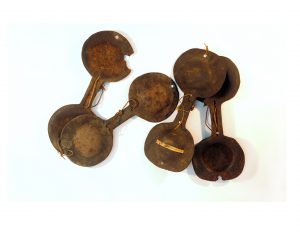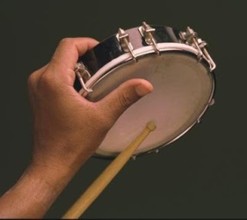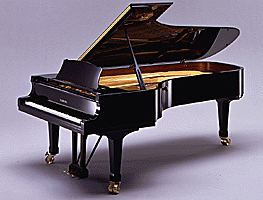Alea de Almeida
Man produces music since prehistorical times, first using his own voice and then musical instruments. At that time, everything could be a source of sound: bones, pieces of wood, stones. These materials could be struck – and percussion instruments appeared! – and, later on, men made holes in bones and began to blow in them, and thus the first flutes appeared.
Imagine the huge amount of musical instruments that were invented throughout history, and not only in western cultures, but everywhere in the planet…this abundance needed to be organized, therefore systems were invented to classify musical instruments. The objective of scholars in organology – which is the science that deals with musical instruments – was to organize things and lead to a better understanding of all of these musical artifacts.
The musical instruments classifying system most used nowadays by museums is the Hornbostel&Sachs, published in 1914 for the first time. The system got its name from its designers: the Austrian ethnomusicologist Erich von Hornbostel and the German musicologist Curt Sachs. The MVIM has also adopted the system and therefore our online catalog divides the instruments according to the Hornbostel&Sachs classification, that is, in idiophones, membranophones, cordophones, and aerophones.
Idiophones are probably better known as percussion instruments, you must have seen them around, like triangles, “reco-recos” (type of güiro), cymbals. Perhaps “carcabas” are less familiar:

Carcabas
What these instruments have in common are the sounds produced through vibration of the instrument itself – for instance, the sounds of the triangle are made by a metal mallet striking the instrument and producing the vibration of its triangular, metallic structure.
Membranophones are also frequently called percussion instruments, or even drums. They are instruments having their sounds produced through the vibration of a membrane stretched on some sort of bracket. This vibration can be produced by hands or mallets. Examples of membranophones are the bass drum, the “tamborim” drum, the tambourine (surdo, tamborim, pandeiro) – instruments that are markedly part of the sounds of Brazilian music.

Surdo

Tamborim

Pandeiro
Less familiar are the darabukkas, instruments of the Arab culture, and the dogdog, small drum from Indonesia.
Cordophones or string instruments are those having their sounds produced through vibration of one or more strings. In order to produce the sounds, the strings need to be tightened and, depending on lenght, diameter, and material of the strings, each string will produce a different note. Guitars, violins, cellos, and harps are cordophones. The piano and the harpsichord, even though often identified as keyboard instruments, are cordophones too.

Piano

Harpsichord
Inside the resonance boxes of the piano and the harpsichord there are strings. In the piano the strings are plucked by a hammer, producing the sounds, but in the harpsichord the strings are plucked by an internal mechanism called saltarello.

Trumpet

Clarinet
Trumpet and clarinet are examples of aerophones.






